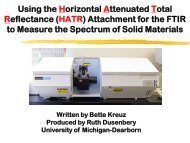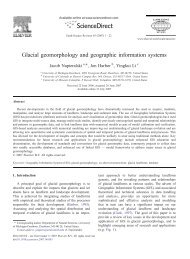Introduction to On Board Diagnostics (II)
Introduction to On Board Diagnostics (II)
Introduction to On Board Diagnostics (II)
Create successful ePaper yourself
Turn your PDF publications into a flip-book with our unique Google optimized e-Paper software.
Sensors and Actua<strong>to</strong>rsEmployed in OBD <strong>II</strong><strong>Diagnostics</strong>Coolant temperature sensor: Principle of operation: The sensor consists of athermister mounted in a housing which is designed <strong>to</strong> be inserted in the coolan<strong>to</strong>lantstream. This housing is threaded with pipe threads which seal the e assembly againstcoolant leakage. A thermister is made of a semiconduc<strong>to</strong>r with a negativetemperature coefficient. The sensor is connected in an electrical circuit. see Figurein handout. The sensor output varies inversely with temperature.e.<strong>Diagnostics</strong>: The electrical characteristics of the thermister may deteriorate withtime. The reference voltage, and the series resister in the circuit are critical sourcesof variation from correct temperature. The relation between resistance andtemperature is not linear in thermister. Silicon temperature sensors provide amore linear output signal and are expected <strong>to</strong> replace thermister.OBD <strong>II</strong> DTCs : There are two failure modes. <strong>On</strong>e is engine coolant temperaturenot correct, and other is insufficient temperature for closed-loop operation orunstable operation.
















